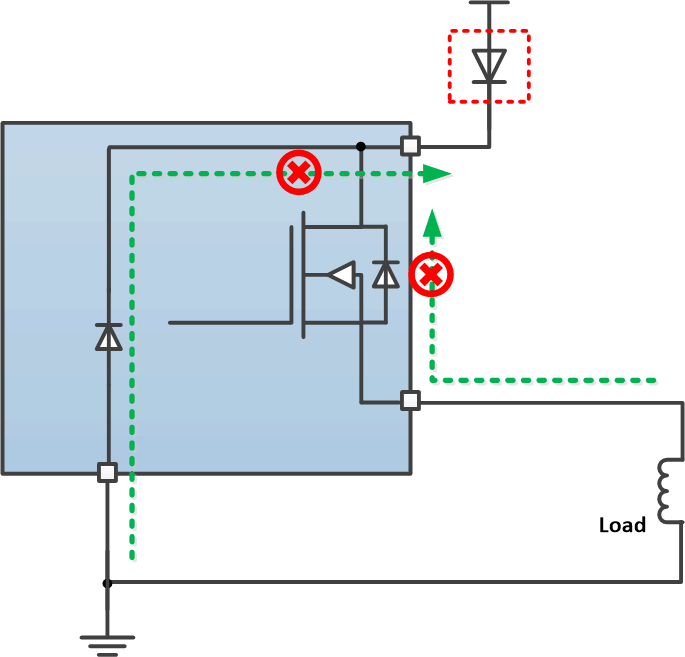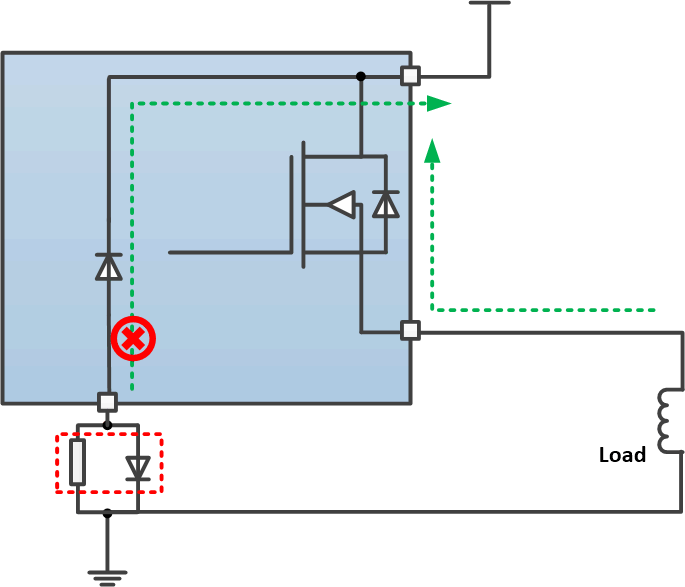JAJSER0D February 2018 – September 2021 TPS1H200A-Q1
PRODUCTION DATA
- 1 特長
- 2 アプリケーション
- 3 概要
- 4 Revision History
- 5 Pin Configuration and Functions
- 6 Specifications
- 7 Detailed Description
- 8 Application and Implementation
- 9 Power Supply Recommendations
- 10Layout
- 11Device and Documentation Support
- 12Mechanical, Packaging, and Orderable Information
パッケージ・オプション
メカニカル・データ(パッケージ|ピン)
- DGN|8
サーマルパッド・メカニカル・データ
- DGN|8
発注情報
7.3.6.5 Reverse-Current Protection
Reverse current occurs in two conditions: short to supply and reverse polarity.
- When a short to the supply occurs, there is only reverse current through the body diode. IR(1) specifies the limit of the reverse current.
- In a reverse-polarity condition, there are reverse currents through the body diode and the device GND pin. IR(2) specifies the limit of the reverse current.
To protect the device, TI recommends using two types of external circuitry.
- Adding a blocking diode (method 1). The device and load are protected when in reverse polarity.
- Adding a GND network (method 2). The reverse current through the device GND is blocked. The reverse current through the FET is limited by the load itself. TI recommends a resistor in parallel with the diode as a GND network. The recommended configuration is a 1-kΩ resistor in parallel with a diode that is less than 100 mA.
 Figure 7-17 Reverse-Current External Protection Method 1
Figure 7-17 Reverse-Current External Protection Method 1 Figure 7-18 Reverse-Current External Protection Method 2
Figure 7-18 Reverse-Current External Protection Method 2